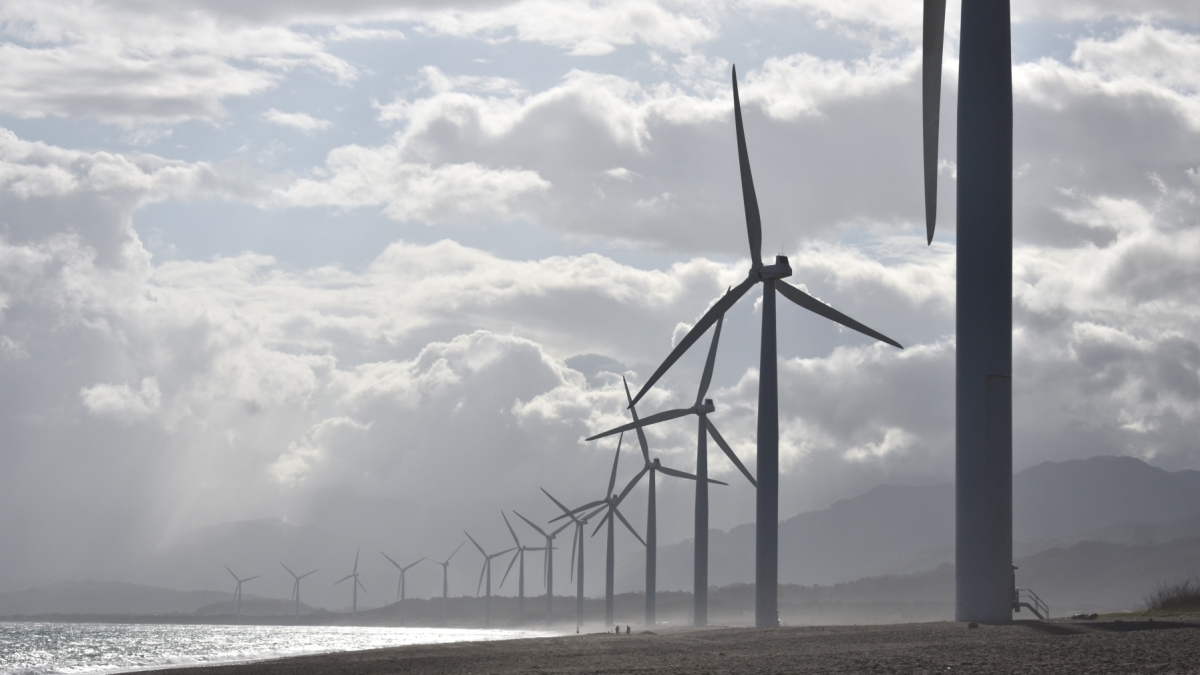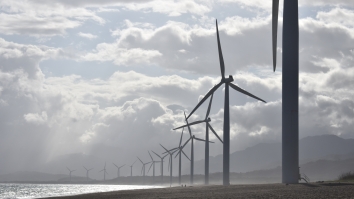 /Jem Sanchez from Pexels
/Jem Sanchez from Pexels
Pressures mount for less desirable energy insurance placements in the region
Industry experts eye offshore investments as most attractive, yet more expensive.
The energy insurance market has remained relatively stable with global uncertainties and buyers exerting significant influence. However, a closer analysis reveals a growing disparity in attractiveness amongst insurance carriers, affecting the available terms for different types of clients, as cautioned by global insurance broker, WTW.
“The widening desirability gulf refers to the gap between the best and the rest of the energy companies. What we are seeing is that those clients who are proactive in the risk management of their business typically translate to a desirable insurance placement as they have a far more favourite risk engineering rating. In addition, those clients who actively engage with the insurers, through updated asset valuations and responsive to risk recommendations, are also favoured,” Charlotte Watts, Energy lead for Asia at WTW told Asian Power magazine.
“However, for clients who may be viewed by insurers as less attractive on account of lower premium volume or risk exposures, they will face a greater challenge for optimum capacity.”
Insurers have shifted their risk appetite towards highly desirable upper-tier business, whilst less desirable placements may encounter challenges in obtaining optimal capacity, according to WTW’s latest Energy Market Review.
The relatively low loss activity in 2023 has resulted in profitability across energy sectors, with insurers showing no signs of withdrawing from the market. However, the widening gap in attractiveness favours upper-tier clients, potentially leading to softer rate trajectories in 2024.
From an insurer’s perspective, Brendan Dunlea, regional head of Property & Engineering, QBE Asia pinpoints how financing is integral towards Asia’s energy transition.
“Most of the time, particularly in larger projects, the investors, and the financiers have to be very happy with the insurance coverage provided that it meets their needs in the event of a large loss. Ideally, there should be a very strong partnership between the insureds, the OEM — when I say the OEM it means the original equipment manufacturers — and the insurers because we have a lot of unknowns with new technology,” Dunlea told Asian Power in a separate interview,
Pressures
Competitive pressures further complicate the landscape, as oversubscribed placements trigger a race amongst insurers to offer compelling solutions.
“This, in turn, causes competitive tensions from insurers who are offering clients more compelling solutions in order to retain their business. In addition, we are seeing competition from other regional hubs outside of Asia Pacific (for example in London or the Middle East) which are looking to gain a larger market share in Asia Pacific,” Watts added.
Historically, frustrations amongst Asian energy companies stem from premium increases and stricter terms during hard market cycles.
“Looking ahead, we are starting to see insurers looking to partner with selected clients over multi-year long-term agreements in order to offer a more compelling and meaningful solution,” Watts predicted.
Navigating the delicate balance between supporting clients and applying exclusion policies, insurers are embracing Environmental, Social, and Governance (ESG) principles.
“Many of them have adopted a more collaborative approach of supporting companies through their energy transition journeys rather than seeking to exclude certain clients and risks from their portfolio,” told Watts.
Emerging technologies like carbon capture and hydrogen also present both opportunities and risks.
“Given the continued focus by insurers on meeting their own ESG targets and a potential reduction in traditional energy premium pool, it is vital for insurers to support their client base with these new emerging technologies in the future, but also crucially now through this transition phase,” Watts told Asian Power.
On a regional level, Dunlea recounted the fire damage caused by battery energy storage systems (BESS).
“Particularly if we look back to 2017 to 2019, in Korea, where they were one of the ones at the forefront of developing batteries, there were a lot of fires. Most insurers avoided BESS at that point. Brokers were struggling for capacity and many owners had to self-insure to some degree,” he recalled.
“But now that they've developed the batteries a lot better, there's a better understanding and better protective measures in place. Insurers are now more comfortable covering this type of technology.”
Financing remains a significant hurdle in the energy transition journey. Warranty terms and OEM reliability go hand-in-hand in building investor confidence and securing financing for long-term sustainability.
“And again, it also brings the partnership aspects into play. Hydrogen will be relatively slow-moving, but there are a number of projects out there that are more or less test facilities. Of course, these will be on a smaller scale. The lessons learned from these will help all parties: the OEMs, the insured and the insurers find solutions for the more inevitable, bigger projects. But that's the thing at the moment. Globally, we're not set up for the transfer of hydrogen,” Dunlea reminded.
“When there are large and/or numerous losses, one of the challenges will be capacity. Several insurers might not even have the capacity for renewables or power generation at all. Some might have restricted capacity. And I think the good thing for us at QBE because of our results in the power generation segment, is that we have a good capacity for renewables risks,” he added.
Opportunities in offshore
The surge in offshore construction projects in Asia brings new opportunities and challenges.
“In Asia, we have seen an increase in offshore construction projects coming to market as many had been previously delayed for multiple reasons, including financing, licensing, or because of the pandemic. This new business bolstered the overall upstream premium pool but it is fair to say that some unease remains over the long tail and poor performance of this construction sector,” WTW’s Watts said.
For his part, QBE Asia’s Dunlea recalled how renewable energy projects, such as solar and wind power, present unique risks compared to traditional energy infrastructure. Wind projects, particularly offshore, grapple with cable damage and technical performance issues, highlighting the need for comprehensive risk management solutions.
“The insureds can’t afford to cut costs in this respect. From an insurance perspective, we want to see that the insureds haven't gone for the cheapest solution. They've got to play their part. Whilst insurance will be there, they have to play their part with a robust installation. When we look at the wind, again, you've seen in the news with some of the key European manufacturers that some of their technology hasn't been performing to the standards that we would expect,” said Dunlea.
“And then when you go offshore, around the world, there have been problems with the submarine cables, where they will get cut. That might be ships putting an anchor down at sea, and they go to lift their anchors, and then they end up damaging cables. Some of those losses can vary from $30m to $100m, and by some accounts, about 80% of offshore wind losses in a monetary sense, come down to cable losses,” he added.
On the other hand, solar would be a perfect fit for the region, but installations face challenges like windstorms and hailstorms, necessitating robust designs and adequate insurance coverage.
“Solar has been relatively quite slow in Asia compared to other parts of the world [...] When you look at the irradiance that we have in Asia, solar is obviously made for the region. Now there are areas of Southeast Asia where wind farms don't get the wind or as much wind as required to ensure a return on their investment. But then it’s best to go with solar and then add BESS,” Dunlea said.
“With wind particularly, we’re seeing more of that in Northern Asia being in locations such as Vietnam, Korea, China, and Taiwan. The developers/investors will look to onshore wind first because it's cheaper to install, and then they'll come to the nearshore wind. Now, when I say nearshore, there's a lot of that in Vietnam, where it's only a few kilometres (km) off the coast,” he added.
Another market Dunlea sees that’s gaining momentum is the “floating wind,” which could potentially be 40km to 80km offshore.
“But of course, that will take more investment. The cheapest, easier option will be onshore,” said Dunlea.
The challenge is still the same, but worse
Risk leaders are advised to anticipate emerging risks beyond day-to-day operations, including the energy transition, geopolitical shifts, and macroeconomic changes. But what lies ahead for insurers remains to be a constant but worsening challenge: natural catastrophes (and their impact on installations and capacity constraints).
“It comes back to the sort of technology that's been employed but some insurers might avoid some risks – completely. It might be a case of costs,” Dunlea said.
Continuous learning, customer engagement, and proactive risk management strategies position QBE Asia as a key player in supporting Asia’s energy transition.
“Particularly you have to spend time listening to your customers. To understand their needs, because customers can be in very different situations, some of them are quite happy to take on quite a bit of risk. Some others have a low appetite for risk. Often, our best ideas will come from listening to our customers. But as I said, it's an industry in that we've got to be continuously learning about our people, looking into the news every day, reading up, and asking questions, and to make sure that we are better prepared to help them.” Dunlea said.























 Advertise
Advertise







